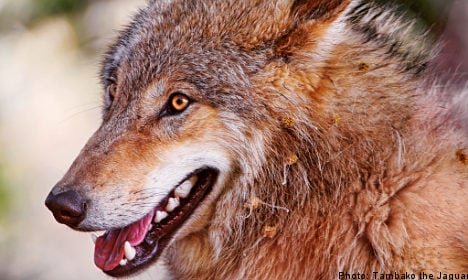The council voted through a proposition on Monday declaring its ambition to “work for a wolf-free municipality” despite neither having any wolves nor the power to act on the issue.
“We already have a wolf-free municipality; we have had for 150 years – we want to keep it that way,” Sven-Erik Sjölund, the Social Democrat politician who presented the proposition, told The Local on Wednesday.
Municipal councils in Sweden do not have the power to act against the wolf population as wild animal control and conservation is a central government issue, a situation of which Sjölund is well aware.
“It should be seen as a statement of our position on the issue. We see no benefit at all from having wolves in the municipality,” he said.
The statement from Nordanstig, a municipality around 350 kilometres north of Stockholm, has met with opposition from those who fear for the future of the 210-strong wolf population in Sweden.
“Firstly I was surprised by the decision – a municipality has no power to act and they should realize that. But then I became irritated – Sweden’s wolves are endangered, they should not be working against their survival,” Per-Olof Eriksson at the Swedish Society for Nature Conservation told The Local on Wednesday.
Sven-Erik Sjölund maintained that it is impossible for wolves and people to co-exist, a claim that Per-Olof Eriksson disputes.
“Any person – a farmer for example – who experiences problems with a wolf can apply to the government for funds to build a protective fence around their animals,” he explained, adding that there is not a single case where a wolf has managed to get through and a kill an animal.
It is this concern for farm animals that is cited as a reason for wanting to keep the wolf population at manageable levels, and the Swedish government implemented a decision in January to allow for the killing of 27 wolves to keep the population at 210.
The Society for Nature Conservation has opposed this hunt, arguing that Sweden has now discarded its position “as an environmental forerunner” and claims that the population is at risk of serious harm.
“The road that the government has embarked on is dangerous, uncontrolled and signals a systematic shift in Swedish nature conservation tradition. This is a sad day for all who care about nature,” said Dr. Mikael Karlsson, President of the Swedish Society for Nature Conservation in a statement at the time.



 Please whitelist us to continue reading.
Please whitelist us to continue reading.
Member comments